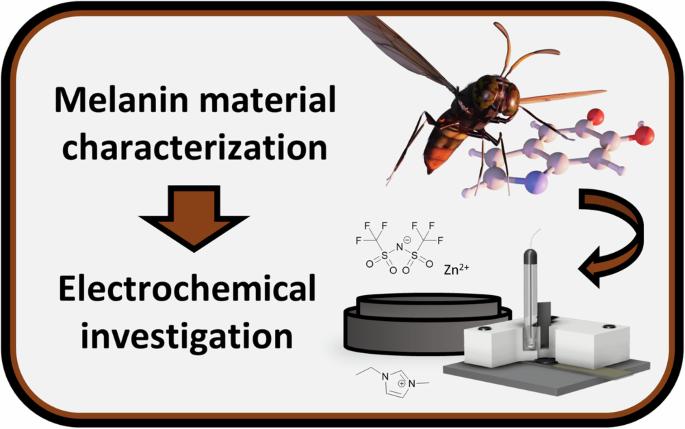利用黑兵蝇提取的黑色素制造锌-离子混合电容器的可持续有机电极
IF 7.5
Q1 MATERIALS SCIENCE, MULTIDISCIPLINARY
引用次数: 0
摘要
严峻的环境挑战要求对能源、水、食物、土地和气候领域的可持续解决方案进行重点研究。最近,色素乌黑色素被认为是解决健康、传感器和能源存储问题的一种有前途的候选物质。然而,黑色素在水性溶剂中的溶解度低、难以成膜以及成本高昂等问题阻碍了这种材料的广泛应用。在此,我们建议将从黑色兵蝇(Hermetia illucens)中提取的黑色素(Mel-BSF)作为一种可持续的替代品,用于制备储能应用中的有机电极。在使用离子液体电解质的锌-离子混合电容器中,作为工作电极材料,Mel-BSF 具有高电位窗口、良好的电化学稳定性和更高的最大容量(91.8 mAh g-1),而合成的 eumelanin 只有 17.3 mAh g-1。结构和表面研究表明,额外的脂肪族化合物(可能是 Mel-BSF 精炼后的脂质)能显著提高薄膜的稳定性和氧化还原中心的可用性。黑色素是一种很有希望用于储能应用的色素,但其局限性阻碍了它的广泛应用。在锌-离子混合电容器应用中,从黑兵蝇中提取的黑色素被用来制备比合成黑色素性能更高的电极。本文章由计算机程序翻译,如有差异,请以英文原文为准。

Sustainable organic electrodes using black soldier fly-derived melanin for zinc-ion hybrid capacitors
Pressing environmental challenges require focused research on sustainable solutions in the domains of energy, water, food, land, and climate. The pigment eumelanin has recently been positioned as a promising candidate for solving issues in health, sensors, and energy storage. However, the low solubility of eumelanin in aqueous solvents, difficult film processibility, and high cost have hindered the material from wide deployment. Here, we propose melanin extracted from the black soldier fly, Hermetia illucens (Mel-BSF), as a sustainable alternative for the preparation of organic electrodes in energy storage applications. Mel-BSF displays pseudocapacitive behaviour with a high potential window, good electrochemical stability, and higher maximum capacity (91.8 mAh g−1) compared to synthetic eumelanin (17.3 mAh g−1) as the working electrode material in zinc-ion hybrid capacitors using an ionic liquid electrolyte. Structural and surface investigations reveal that additional aliphatic compounds, potentially lipids present after Mel-BSF refinement, significantly increase the film stability and redox centre availability. Eumelanin is a promising pigment for use in energy storage applications but has limitations hindering its wide usage. Here, melanin extracted from the black soldier fly is used to prepare electrodes with higher performance than synthetic melanin in zinc-ion hybrid capacitor applications.
求助全文
通过发布文献求助,成功后即可免费获取论文全文。
去求助
来源期刊

Communications Materials
MATERIALS SCIENCE, MULTIDISCIPLINARY-
CiteScore
12.10
自引率
1.30%
发文量
85
审稿时长
17 weeks
期刊介绍:
Communications Materials, a selective open access journal within Nature Portfolio, is dedicated to publishing top-tier research, reviews, and commentary across all facets of materials science. The journal showcases significant advancements in specialized research areas, encompassing both fundamental and applied studies. Serving as an open access option for materials sciences, Communications Materials applies less stringent criteria for impact and significance compared to Nature-branded journals, including Nature Communications.
 求助内容:
求助内容: 应助结果提醒方式:
应助结果提醒方式:


